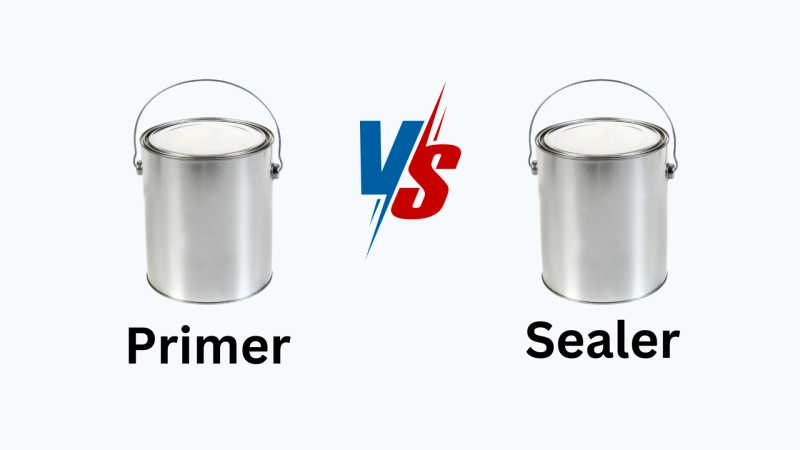When it comes to painting projects, whether you're a seasoned professional or a weekend DIY warrior, understanding what products to use can make a significant difference in the final outcome. Two of the most commonly confused products are sealers and primers. Both serve as preparatory coatings for surfaces before painting, but they have distinct functions. This blog post will explore the differences between sealers and primers, their unique benefits, and guide you on how to choose the right one for your specific needs.
Understanding Sealers
A sealer is a type of coating applied to surfaces to protect them from moisture, stains, and other environmental factors. It is typically clear or semi-transparent and is used to create a barrier between the surface and the paint. Here are some key benefits of using a sealer:
Moisture Protection
One of the primary purposes of a sealer is to protect surfaces from moisture. This is particularly important in areas prone to high humidity or direct water exposure, such as kitchens and bathrooms. By preventing moisture from penetrating the surface, sealers help reduce the risk of mold and mildew growth.
Stain Blocking
Surfaces that have been stained or discolored may require a sealer to prevent these imperfections from seeping through the new coat of paint. Sealers are effective at blocking stains from water damage, smoke, and other contaminants.
Enhancing Surface Uniformity
Sealers can help create a more uniform surface by filling in minor imperfections. This can be beneficial when working with porous materials like wood or concrete, as it results in a smoother finish once painted.
Suitable Surfaces for Sealers
Sealers are best suited for surfaces like wood, masonry, and drywall where moisture protection and stain blocking are essential. They are also commonly used on exterior surfaces to protect against weathering.
Understanding Primers
Primers are preparatory coatings designed to improve the adhesion of paint to a surface. They are typically opaque and come in various formulations to suit different surfaces and paint types. Here are some of the key benefits of using a primer:
Improved Adhesion
Primers enhance the adhesion of paint to surfaces, ensuring that the paint sticks properly and lasts longer. This is particularly important on slick or glossy surfaces where paint might not adhere well on its own.
Surface Coverage
Primers often have superior hiding power compared to regular paint, meaning they can cover up previous colors or patterns more effectively. This helps achieve a clean, even finish with fewer coats of paint.
Blocking Stains
Like sealers, primers can also block stains and discoloration from bleeding through the paint. This makes them ideal for surfaces that have been previously painted with dark colors or those with visible stains.
Surface Protection
While not as protective as sealers in terms of moisture resistance, primers do offer some level of surface protection, helping to seal porous materials and providing a stable base for the topcoat of paint.
Suitable Surfaces for Primers
Primers are versatile and can be used on various surfaces including metal, wood, drywall, and previously painted surfaces. They are essential when painting over bare wood or new drywall, as well as when switching from dark to light colors.
Key Differences Between Sealers and Primers
While both sealers and primers prepare surfaces for painting, they differ in composition and function. Understanding these differences will help you choose the right product for your project:
Composition: Sealers are usually clear or semi-transparent, while primers are opaque and resemble paint.
Function: The primary function of a sealer is to protect surfaces from moisture and stains, while primers focus on improving paint adhesion and coverage.
Application: Sealers are generally applied as a single thin coat, while primers may require multiple coats for optimal coverage and adhesion.
Drying Time: Sealers often dry faster than primers, making them suitable for projects with tight timelines.
Surface Preparation: While both products require clean surfaces for application, primers may necessitate additional prep work like sanding or cleaning to ensure optimal paint adhesion.
When to Use a Sealer vs. a Primer
Choosing between a sealer and a primer depends largely on the specific requirements of your project. Here’s a guide to help you decide:
Use a Sealer If:
- You're dealing with porous surfaces like wood or masonry that need moisture protection.
- The surface has existing stains or discoloration that need blocking.
- You want to create a uniform base on an exterior surface exposed to weathering.
Use a Primer If:
- You're painting over bare wood or new drywall.
- The surface is slick or glossy, requiring improved paint adhesion.
- You want to switch from a dark color to a lighter one.
- The surface has been previously painted but requires better coverage or stain blocking.
In some cases, both products may be necessary. For example, if you’re repainting kitchen cabinets that are glossy and stained, you might use a sealer first to block stains and then apply a primer to ensure proper paint adhesion.
Conclusion
Understanding the roles of sealers and primers can greatly enhance your painting project's success. Both products play crucial roles in preparing surfaces for painting, but their functions are distinct. Sealers offer protection against moisture and stains, making them ideal for porous or exterior surfaces. Primers focus on improving adhesion and coverage, essential for bare or slick surfaces.
Whether you're repainting your living room walls or tackling an outdoor project, choosing the right preparatory coating is key to achieving professional-looking results. Consider the specific needs of your project, consult with local experts if necessary, and invest in quality products to ensure your paint job stands the test of time.
By selecting the appropriate sealer or primer—or both—you'll set your painting project up for success from the start, resulting in a beautiful finish that lasts.


